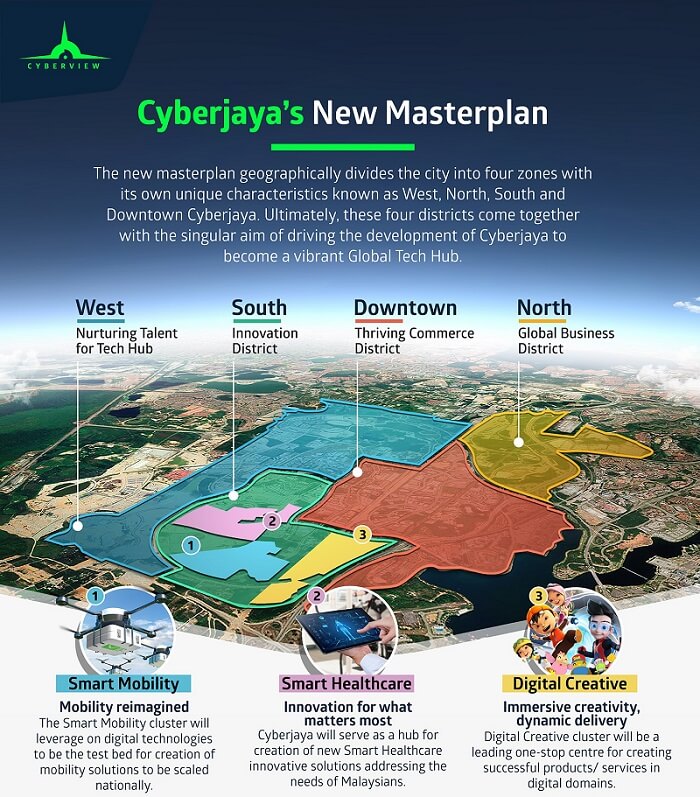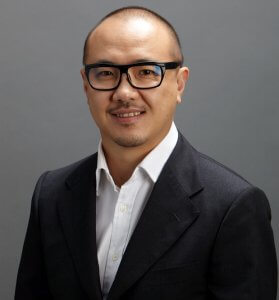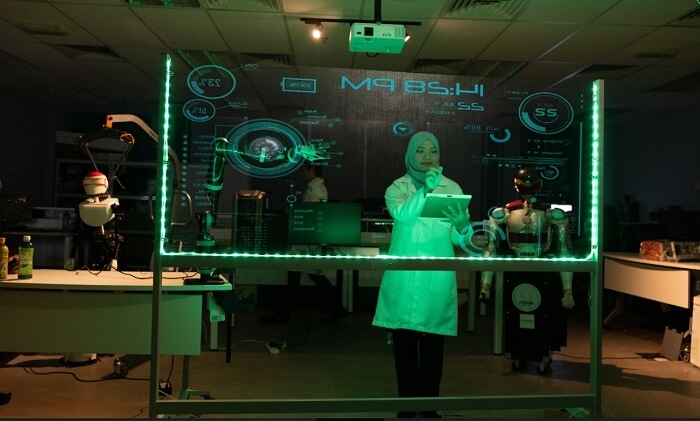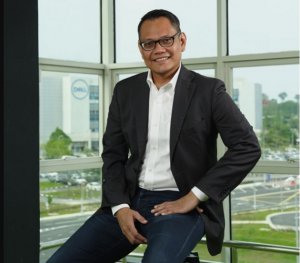
John Low, co-managing partner of Southeast Asia for Roland Berger says nothing of the scope of Cyberjaya’s new masterplan exists or will be built in ASEAN. “It’s going to be of global significance for sure.”
[Ed note: We ended Part 1 yesterday emphasizing the point that Cyberview’s role as custodian for Cyberjaya and its close relations with Government gives it a strong pathway for progress to take place in the smart city. Pt 2 talks about why the new masterplan was created with the goal of solving a key issue in Cyberjaya, which is companies working in silos.]
The new masterplan for Cyberjaya rolled out by Cyberview, serves ultimately, to solve one of the main issues of current-day Cyberjaya – entities working in silos. This is one of the primary challenges of the city now, according to John Low (pic), co-managing partner of Southeast Asia for Roland Berger, and why the global consultancy was engaged to draw up and validate a new masterplan that will be built across Cyberjaya.
 “Although people here are in proximity to one another, but they’re still operating in a silo manner,” Low tells Digital News Asia. A hub envisioned in the masterplan would allow for entities to better communicate and collaborate, thus fostering more innovation.
“Although people here are in proximity to one another, but they’re still operating in a silo manner,” Low tells Digital News Asia. A hub envisioned in the masterplan would allow for entities to better communicate and collaborate, thus fostering more innovation.
Cyberjaya has other gaps to fill, Low notes. Retail and entertainment support is one aspect. While there is certainly more to see and do in Cyberjaya these days, it’s still not as attractive a hangout spot as, say, Bangsar or Bukit Bintang.
“In this new plan, we want to put everything under a hub, under one roof,” says Low. This means also strengthening the retail and entertainment support, as well as improving the livability of the city.
“A smart city is not just about what’s outside the home. It starts from within homes,” he adds. “It’s not just the infrastructure – being more livable means I can do things more conveniently from home – I can be easily connected to the things around me.”
This is particularly vital in the post-Covid new normal, where questions of how one can live, work and play within a city are more crucial than ever.
Strength in proximity
Turning Cyberjaya into an ecosystem is important, because there is strength in proximity. “You exchange ideas and become more innovative when you share your thoughts with other people. You gain knowledge when you communicate. You’re able to improve R&D when things are shared, brainstormed and discussed,” notes Low.
“If you work standalone in a siloed manner, there is only so much creativity that you can get. That is the foundation we want to build in the next plan. It’s about leveraging the strengths that Cyberjaya has.
And Cyberjaya does have its strengths. For example, the large number of learning institutions there is a plus point. Not only is Cyberjaya home to large, well-known institutions like Multimedia University (MMU) and Lim Kok Wing University, companies and organisations both local and international house their training institutions in the city too.
At the same time, there are a lot of supporting government agencies residing in Cyberjaya, including the likes of Malaysia Digital Economy Corporation and the Malaysian Global Innovation & Creativity Centre.
The new masterplan is all about bringing these strengths together. It helps that Cyberjaya is already well-designed to begin with. “The existing plan is already quite good – Cyberjaya is fairly well planned from the beginning, unlike cities that were developed over the years,” Low says.
Much of the planned four districts in the masterplan are already present – the bigger undertaking, then, is the development of the Southern side of Cyberjaya, across approximately 400 acres. But the well-designed aspect of Cyberjaya meant that Roland Berger didn’t need to uproot pre-existing infrastructure and tenants, just enhance them. “I would say that there are very little constraints for us.”
A game-changer
The new Cyberjaya masterplan has a long way more to go. It’s not just buildings and spaces that need constructing, but communities that need building. Yet the work to improve the city can already be done.
Low says that incentives to attract more startups and corporations, which is part of the masterplan, can already be executed.
At the same time, some pilot living lab projects can start as well. In short, the development of approximately 400 acres in South Cyberjaya, so to speak, doesn’t need to be completed before moving more people into the city. The community can be built first.
And it’s a community that needs building now. The masterplan, after all, fits into the Malaysia Digital Economy Blueprint (MyDigital). According to Low, the masterplan intends to drive development of the country’s Digital Creative industry into a world-class community – something that is a focus in MyDigital.
But it’s not just that. The new masterplan’s aim is to build upon the aspects that are already being developed in the city – the plan, then, is to continue specialisation in sub-areas such as big data analytics, mobile internet, artificial intelligence, robotics, system integration and Internet of Things.
Low believes that the new masterplan is “very instrumental” in supporting digitisation in Malaysia. “You’re talking about Malaysians having the ability to get into a lot of new, developing tech. Then there is the job creation opportunities. You can see from the scale of what we’re trying to do, that ultimately, the (masterplan’s) contribution to the economy is going to be significant.”
Meanwhile, Roni Shah Mustapha (pic), Head of Business, City and Communications Division at Cyberview Sdn Bhd adds that the masterplan holds a significant milestone not just for Cyberjaya, but to the nation as well. “Not only will it become key to attracting
more than 1,200 companies into the city by 2045, but this masterplan is anticipated to generate more than US$60.36 billion (RM250 billion) to the country’s GDP and create more than 87,000 jobs within the same timeframe.”
Low stresses that there isn’t anything of this scale of tech-focused development in Malaysia. “This is a game-changer for Malaysia when it comes to digital development – in having a new digital hub. Nothing of this is even anywhere that is going to be built in ASEAN. It’s going to be of global significance for sure.”
Whether or not the new Cyberjaya will become a true regional tech hub remains to be seen, but the new masterplan is the running start to what is set to be a huge leap. Change, as they say, is inevitable. Cyberjaya feels like it is changing for the better.









